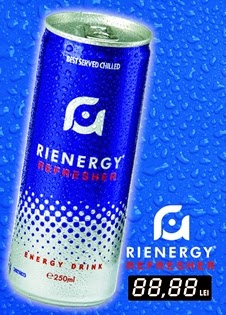 Only the other day, this Kat discovered that the
Benelux-based firm of IP enthusiasts Hoyng Monegier had an office in Spain too,
and it is from that very office that Laura Alonso, a partner in the firm's
Madrid office, has written to share with the Kats and their readers the news of
a very gratifying decision for Coca-Cola before the General Court of the
European Union. This makes today a particularly happy one for the
multinational soft-drink megacorp, since this morning one of its
privately-owned subsidiaries, Energy Brands, Inc., also had spot of success
before the same court when an appeal against its successful revocation
proceedings against a SMART WATER Community trade mark (CTM) was dismissed [on
which see earlier Katpost here.
Presumably when they open a bottle of bubbly to celebrate anything, it's a
non-alcoholic cola carbonated beverage flavoured with vegetable extract
...]. Anyway, this is Laura's tale:
Only the other day, this Kat discovered that the
Benelux-based firm of IP enthusiasts Hoyng Monegier had an office in Spain too,
and it is from that very office that Laura Alonso, a partner in the firm's
Madrid office, has written to share with the Kats and their readers the news of
a very gratifying decision for Coca-Cola before the General Court of the
European Union. This makes today a particularly happy one for the
multinational soft-drink megacorp, since this morning one of its
privately-owned subsidiaries, Energy Brands, Inc., also had spot of success
before the same court when an appeal against its successful revocation
proceedings against a SMART WATER Community trade mark (CTM) was dismissed [on
which see earlier Katpost here.
Presumably when they open a bottle of bubbly to celebrate anything, it's a
non-alcoholic cola carbonated beverage flavoured with vegetable extract
...]. Anyway, this is Laura's tale:Coca-Cola will be glad about the outcome of Case T-384/13 Intermark srl v OHIM, The Coca-Cola Company, which represents an important victory in the company's efforts to protect its famous chromatic combination and script. Romanian company Intermark had applied to register the figurative mark on the left for various drinks in Class 32 and "advertising; Business management; Business administration; Office functions" in Class 35. The question which the Office for Harmonisation in the Internal Market (OHIM) and ultimately the General Court had to decide was whether that mark was confusingly similar to The Coca-Cola Company's earlier figurative CTM (below, right) covering non-alcoholic drinks in Class 32 and its CTM for the word mark COCA-COLA for, inter alia, “advertising, business management; business administration; office functions” in Class 35.
The court, dismissing Intermark's appeal against the OHIM Board of Appeal's affirmation of the Opposition Division's decision, found that the word element ‘cola’ was the dominant element in Intermark’s sign and agreed that, in assessing likelihood of confusion with the earlier trade mark in respect of goods in Class 32, the evidenced reputation of the earlier mark was relevance, as was the fact that the common word element (COLA) was depicted in the sign applied for in Coca‑Cola’s ‘classic white cursive script on a red background’.
As regards the assessment of likelihood of confusion with the earlier word mark COCA-COLA to cover goods in Class 35, the court noted the dominant character of the term ‘cola’ in the mark applied for and acknowledged that it was a distinctive element in the earlier mark to cover services in Class 35. Added the court, the fantasy word ‘rienergy’, despite having distinctive character in respect of the goods and services at issue, played a subsidiary role in the mark applied for, even though it could not be categorised as totally negligible in the overall impression created by that mark; the same considerations applied to the figurative element situated above the word ‘rienergy’ [oh dear, at first glance this Kat didn't even notice that bit of Intermark's sign at all, his gaze being magnetically drawn to the script and the word 'Cola']. None of these elements were considered capable of preventing a likelihood of confusion, in the court’s view.
This decision comes in a particularly good timing, a few days after the trialling in Spain of a major redesign of Coca-Cola’s brand image under a ‘master brand’ strategy, which for the Spanish market translates into presenting the iconic red corporate colour prominently displayed across all varieties of its products.
A little rienergy can't save Coke-alike trade mark application, says General Court
 Reviewed by Jeremy
on
Wednesday, March 18, 2015
Rating:
Reviewed by Jeremy
on
Wednesday, March 18, 2015
Rating:
 Reviewed by Jeremy
on
Wednesday, March 18, 2015
Rating:
Reviewed by Jeremy
on
Wednesday, March 18, 2015
Rating:


.jpg)






![[Guest post] Generative AI, originality, and the potential role of contract in protecting unoriginal works](https://blogger.googleusercontent.com/img/b/R29vZ2xl/AVvXsEiRjIvWeINvgUvOkMPt2P537OLqWimsB1oLkHO4UvvIVy0Ej8SfFDl6yik5ZBAC-VJb49ohNHAoJZsBy1mvDKP0IyaII-xHpdU6-LSyvT0CQmQx2kI-BEOJ0CFxLKg3i-BRftZPUFLY3CiWWmvGeLxEjUvIMui8QoaFU5Y7uvPSaSXNX1l6dzPD3A/s72-c/41BG++YqbbL._AC_UF894,1000_QL80_.jpg)


![[UPCKat] Access to confidential information by parties and the public in the UPC](https://blogger.googleusercontent.com/img/b/R29vZ2xl/AVvXsEiFdlSuWOwwvnuR0oRjwoQq6fXwKT3WgoyjeYSpjNQ3o2zGCRMsek2QNk7XIvZlS2qG6Zr1y4frq4D8ioaNjxaaCc2XM3jLLrCWeCttzCk3K46psar-zOIQbDMwZZaDZvnrfzBNKfDpT7xWznObNuCahBnoflKfpTHvpJa0-GX3cbYVNbowHWmFbw/s72-c/Cat%20shush.jpg)







No comments:
All comments must be moderated by a member of the IPKat team before they appear on the blog. Comments will not be allowed if the contravene the IPKat policy that readers' comments should not be obscene or defamatory; they should not consist of ad hominem attacks on members of the blog team or other comment-posters and they should make a constructive contribution to the discussion of the post on which they purport to comment.
It is also the IPKat policy that comments should not be made completely anonymously, and users should use a consistent name or pseudonym (which should not itself be defamatory or obscene, or that of another real person), either in the "identity" field, or at the beginning of the comment. Current practice is to, however, allow a limited number of comments that contravene this policy, provided that the comment has a high degree of relevance and the comment chain does not become too difficult to follow.
Learn more here: http://ipkitten.blogspot.com/p/want-to-complain.html